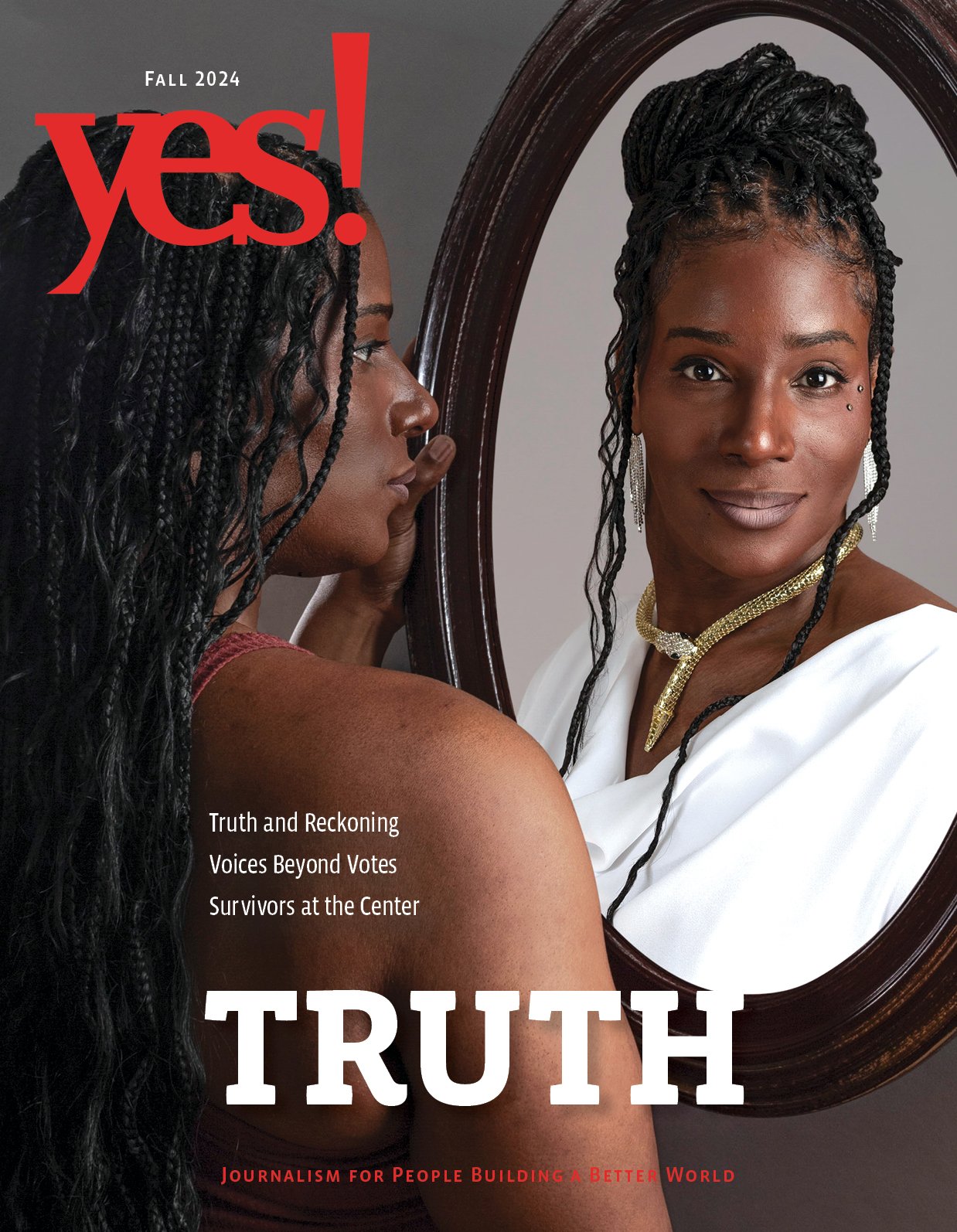To Survive Climate Catastrophe, Look to Queer and Disabled Folks

In 2018, a diverse crowd of two-spirit, queer, and trans people rallies in San Francisco before the Queers 4 Climate Justice RISE march for jobs and justice.
Photo by Devlin Shand
This piece comes from a rich conversation between Patty Berne and Vanessa Raditz for the Fire & Flood Film. In a practice of mixed-ability organizing, Raditz has typed and crafted this piece from Berne’s own words, ideas, and frameworks.
Communities around the world are grappling with the growing number and intensity of climate-related disasters because of climate change. Immediately after one of these disasters in the U.S., federal, state, and nonprofit agencies frequently pour financial resources into the communities affected by the latest fire, flood, or earthquake. But these emergency support systems are usually unable to address the long-term needs of those affected, and all too often, these structural support systems entirely overlook those of us who live at the intersection of multiple oppressions: race, class, gender, disability, and sexual orientation, to name a few.
There are endless stories: During Hurricane Maria in Puerto Rico, queer and trans communities lost access to medical necessities such as psychiatric medicines and hormones, and many faced discrimination and violence. During the fires in Northern California, a black queer environmental justice activist with asthma went into respiratory distress and now lives with permanent brain injury. From homeless encampments to local jail cells, the social, political, and economic disparities among disabled queer and trans people of color put our communities at the frontlines of ecological disaster.
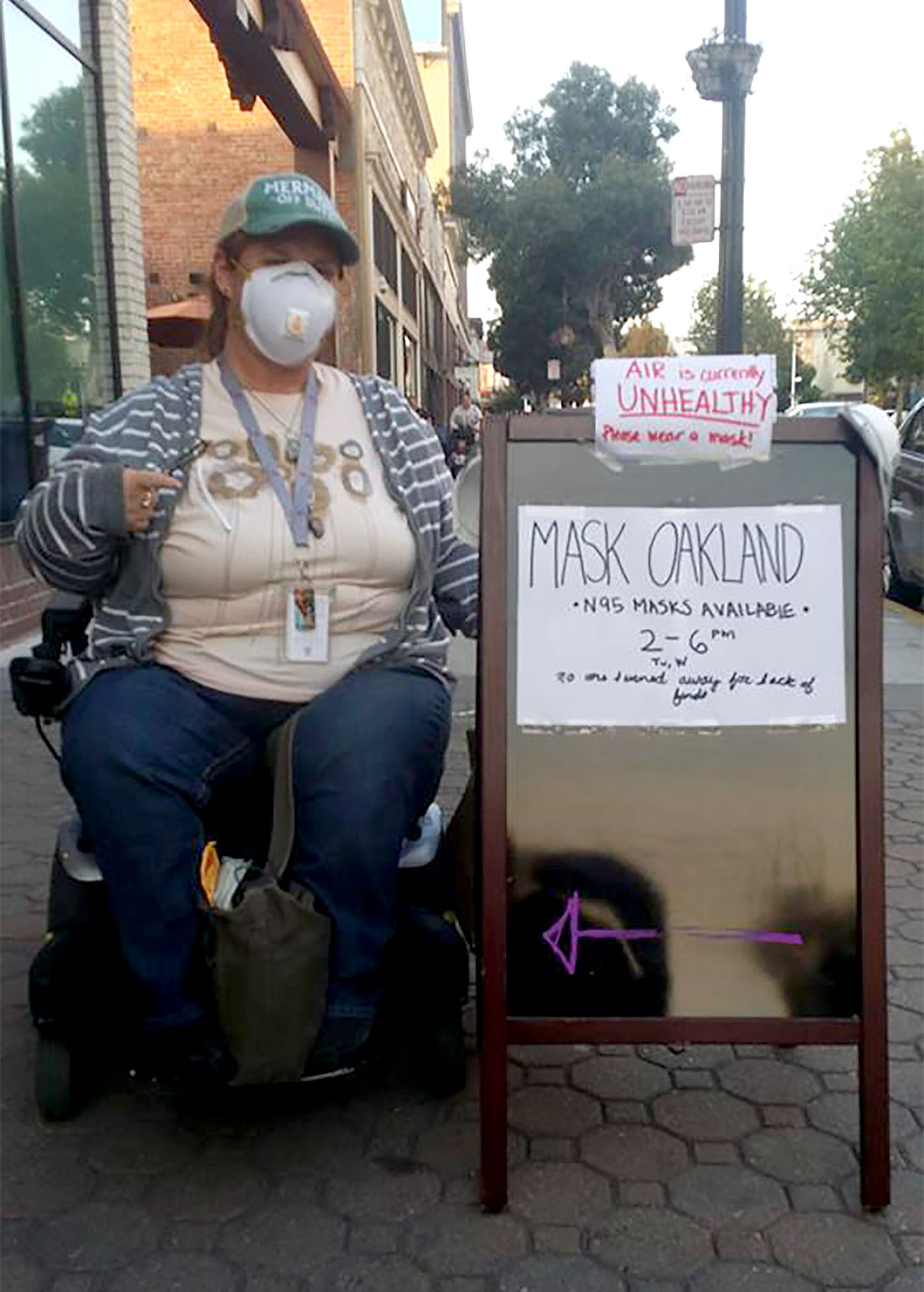
The forces of capitalism, racism, ableism, transphobia, and homophobia may have cornered us into a vulnerable position in this unprecedented moment in our planet’s history, but the wisdom we’ve gained along the way could allow us all to survive in the face of climate chaos. The history of disabled queer and trans people has continually been one of creative problem-solving within a society that refuses to center our needs. If we can build an intersectional climate justice movement—one that incorporates disability justice, that centers disabled people of color and queer and gender nonconforming folks with disabilities—our species might have a chance to survive.
Let’s start by openly, joyously proclaiming that we are natural beings, not aberrations of nature. We find healing and justice in the realm of queer ecology, a burgeoning field exploring the vast diversity of gender and sexuality that exists in nature, such as the more than 50 species of coral reef fish that undergo one or more sex transitions in their lifetime, completely transforming their behaviors, bodies, and even reproductive organs.
When we begin to see the planet through this lens, we remember that the entire world has biodiversity that is precious, necessary for our survival, and deeply threatened. Whether we’re looking at ecology, society, or our human culture, biodiversity is our best defense to the threats of climate change. When we begin to see our own diversity reflected in the ecology of this planet, we can also recognize that the same forces threaten both. It’s not difficult to see parallels in the havoc that capitalism and the drive to hoard wealth has wreaked on our bodies as queer people, gender nonconforming folks, and people from colonized lands, and how that capitalism has abused and exploits the land.
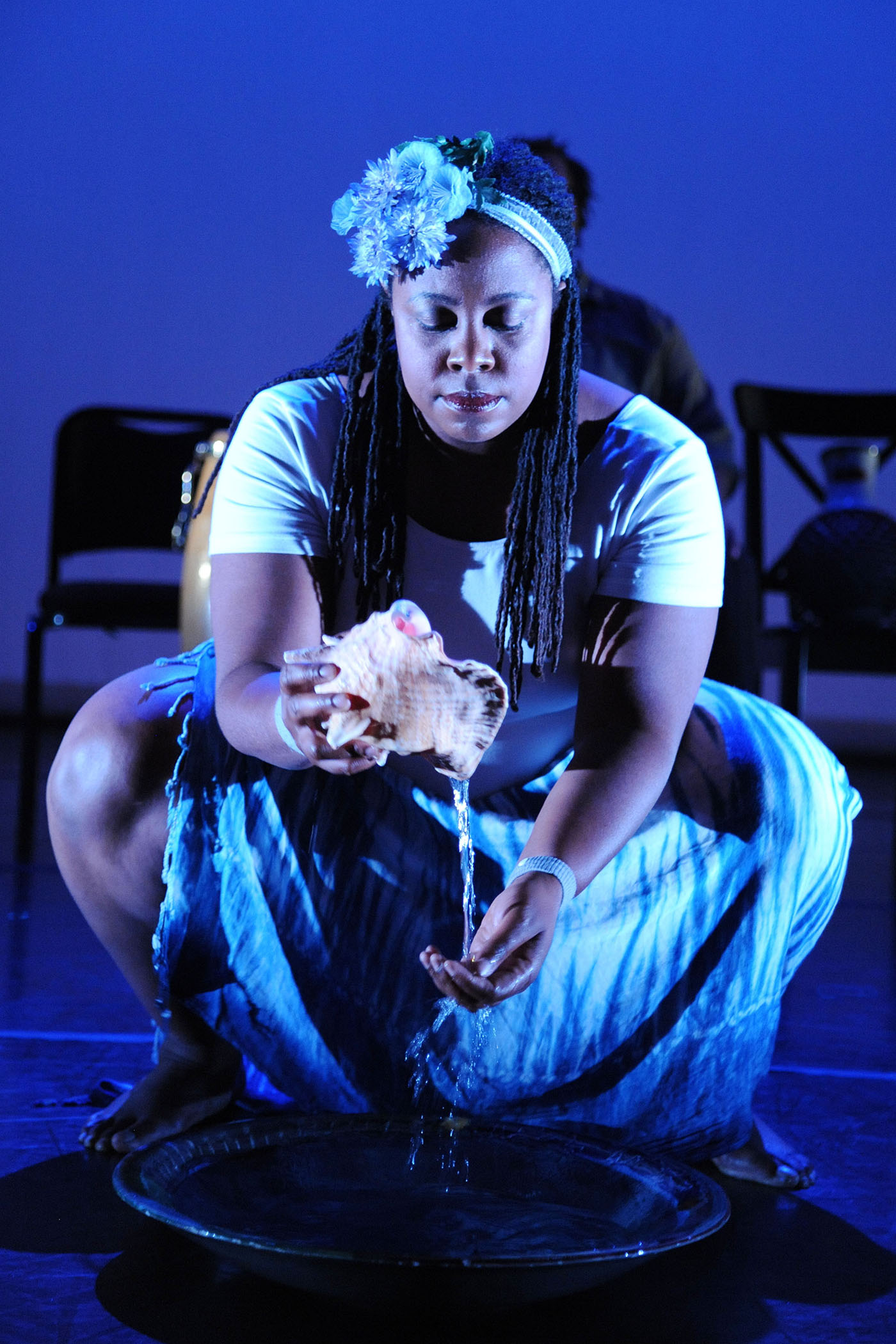
Performance artist India Harville crouches to pour water from a pink conch shell into her hands for a 2016 Sins Invalid performance titled “Birthing Dying Becoming Crip Wisdom.” Sins Invalid is a performance project led by people with disabilities and intersecting identities. Photo by Richard Downing.
Just as capitalism is one of the biggest threats to biodiversity on this planet—seen in the clear-cutting of forests to plant monocultures for fuel—it is also the driving force behind the violence towards multiply marginalized people with disabilities, because our bodies are not perceived as being “productive.” This drive to hoard wealth is beyond anything we can conceive, and it has already cost our species so much loss. What we’re seeing in the climate chaos that’s erupting is the Earth’s resistance. The question is: How can we ally with this Brown, queer, disabled, femme planet to support her survival, and the survival of all who depend on her?
Each of us have an essential role to play in sustaining our communities, our environment, our planet.
In the face of so much institutional apathy, it is left to those living squarely at the intersections of all of these injustices to tear down the centuries-old silos among climate justice, disability justice, and queer liberation organizing. Disabled queer and trans communities of color are already preparing for the survival of their communities through oncoming disasters, teaching each other skills in resilience-based organizing to strategically create the changes that we need for queer and trans futures.
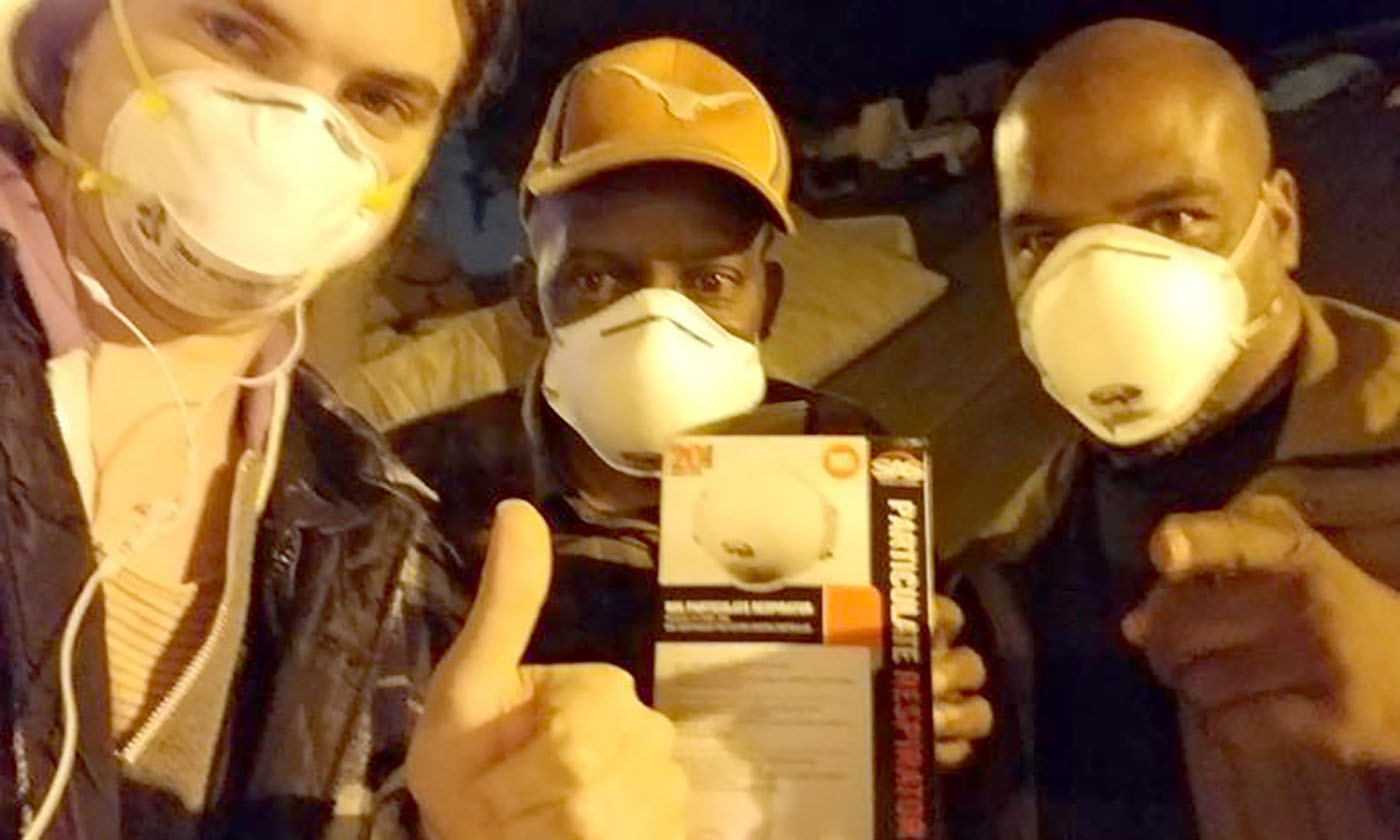
During the fires and floods of 2017, queer disabled organizers in the Bay Area shared masks and air filters with one another, while in Puerto Rico, communities banded together to share generators to refrigerate insulin. At the 2018 Solidarity to Solutions grassroots summit, held alongside the government-organized Global Climate Action Summit, trans Latinx organizers affected by the North Bay fires led a healing justice workshop for queer and trans people of color environmental justice activists from around the world to connect and learn from one another. This burgeoning movement may be invisible, but it should not be surprising.
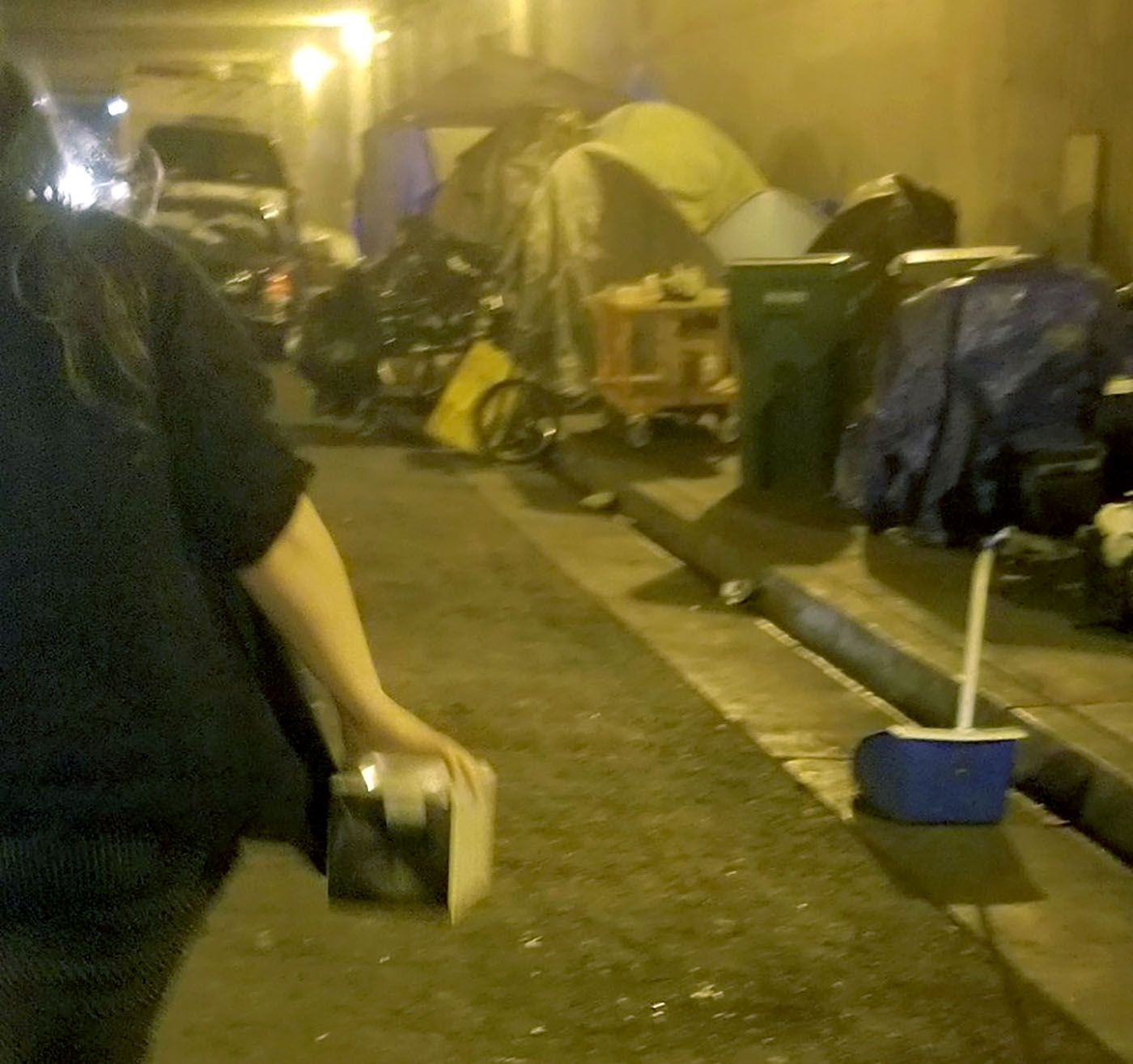
We have to know our worth to value others. In this historical moment, we have to fight for the valuable lives of butterflies, and moss, and elders. Because our lives—and all life—depends on it. We must move beyond our cultural beliefs that tell us we are only worth as much as we can produce. Just as each component in Earth’s ecosystem plays a vital role in supporting everything around it, so do each of us have an essential role to play in sustaining our communities, our environment, our planet. In this time, people need strength models. Strength isn’t just about momentary power to jump building to building, it is also endurance to handle what is less than ideal. It’s the gritty persistence that disabled people embody everyday.
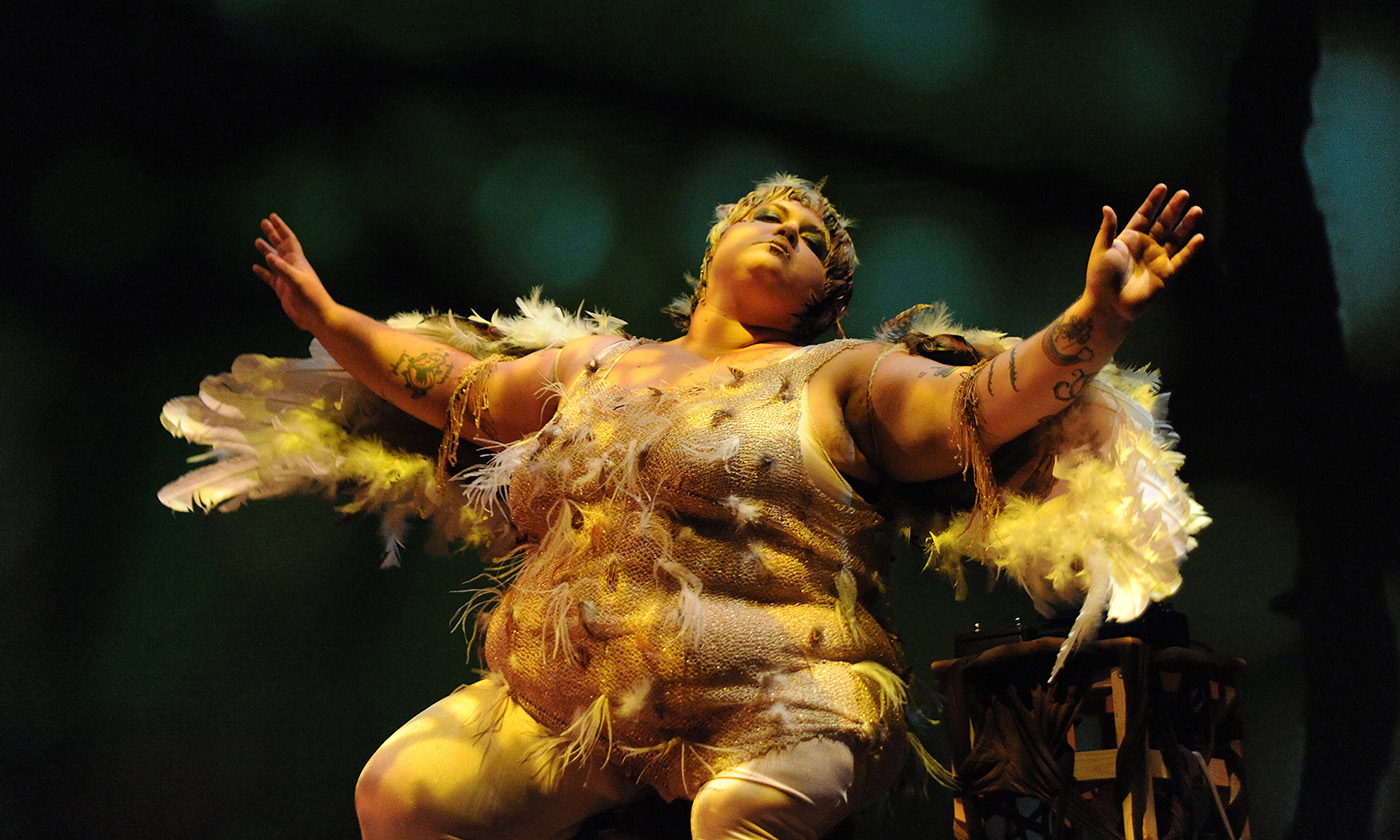
Even in the moments when we’re in pain, when we’re uncomfortable, when the task ahead feels overwhelming, and we feel defeated by the sheer scope of everything that’s wrong in the world, we don’t have to give up on life or on humanity. Queer and trans disabled people know that, because that’s how we live. At this moment of climate chaos, we’re saying: Welcome to our world. We have some things to teach you if you’ll listen, so that we can all survive.
|
Vanessa Raditz
is co-founder of Queer Ecojustice Project, a media and education collective. She is director of QEP’s first film project, “Fire & Flood: Queer Resilience in the Era of Climate Change.”
|
|
Patty Berne
is the co-founder and co-director of Sins Invalid, a disability justice-based performance project.
|
